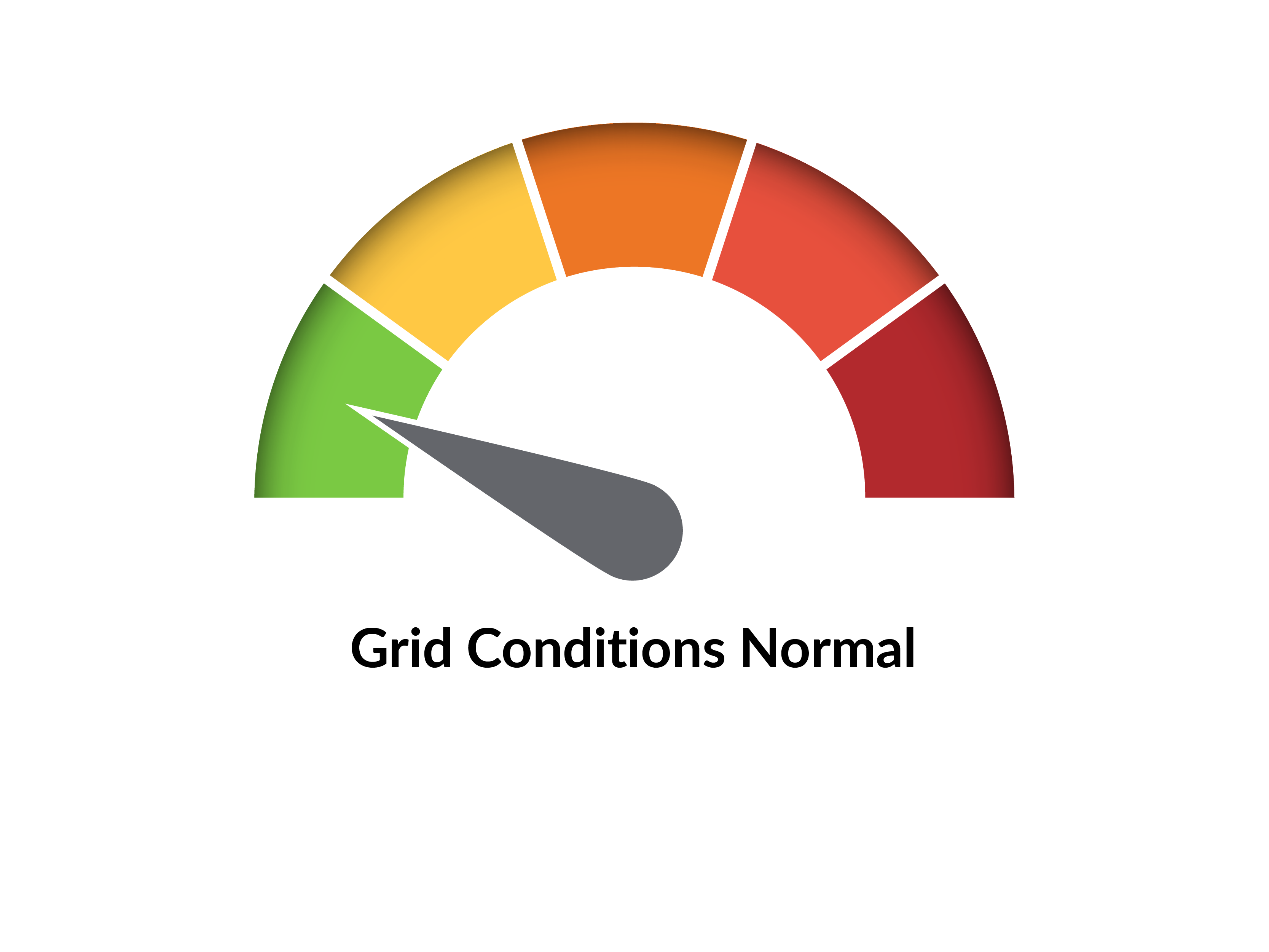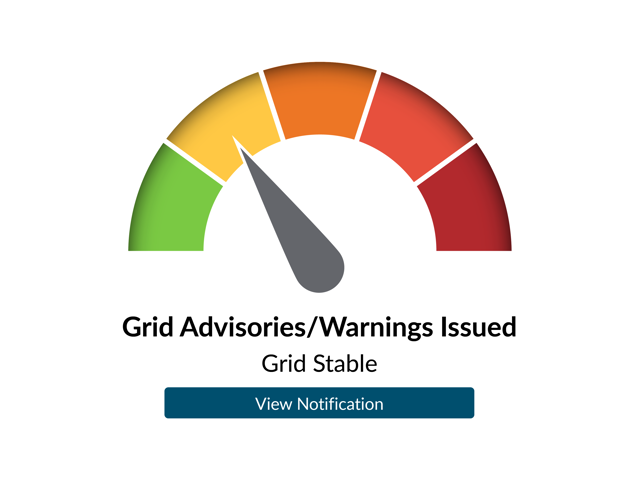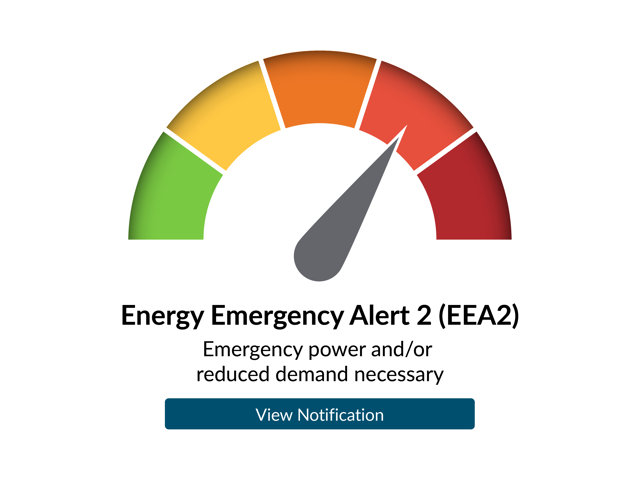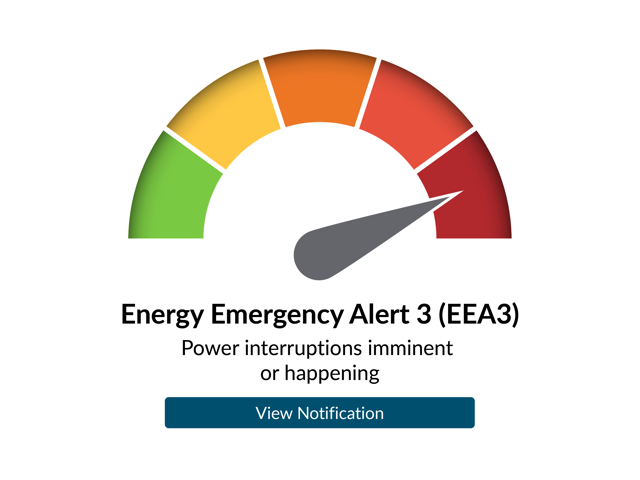The grid conditions gauge is a visual representation of MISO's active market capacity emergency notifications. The tool, designed for situational awareness only, shows real-time generation (capacity) and/or weather conditions impacting the MISO grid. The gauge needle moves when an alert, advisory, warning, event, or termination instruction takes effect (not when a notification is sent).
Disclaimer: MISO notifications are official communications authored by the control room shift manager. The notification takes precedence over what may be shared visually on the Grid Conditions gauge.

Green
Under normal grid conditions, the needle points to the green section of the gauge signifying the grid is stable.
Should operators issue a weather related alert, e.g. Severe Weather Alert, the needle remains in the green. However, a "View Notification" button will appear under the gauge. By clicking on the button, users can read the alert issued by the control room shift manager. The alert includes information on the affected MISO region and expected weather conditions.
All MISO notifications are operator-to-operator communications.

Yellow
The grid is stable and MISO has issued one or more of the following notifications:
Conservative Operations: Used for situational awareness, the conservative operations notification asks MISO members to defer, delay, or recall any non-essential maintenance. This notification provides MISO member operators an indication that system conditions may require special attention.
Capacity Advisory: Used for situational awareness, this notification informs MISO member operators that, based on projected system conditions and capacity (supply) levels, there may be a need in the coming days to bring additional generation on-line.
Maximum Generation Alert: Used for situational awareness, this notification serves as an early alert that system conditions may require emergency actions.
Maximum Generation Warning: This notification asks member operators to prepare for a possible situation (an energy emergency alert) where operating reserve requirements may not be met without taking actions.

Orange
The grid is stable and MISO has issued an Energy Emergency Alert 1 (EEA1).
EEA1 is the first level of emergency action, triggered when MISO can no longer meet the forecasted demand and operating reserve requirements without intervention. In other words, it indicates that power demand may exceed supply if no action is taken.
By declaring EEA1, MISO operators can access additional generation to boost the electricity supply and maintain grid reliability.

Dark Orange
The grid is stable and MISO has issued an Energy Emergency Alert 2 (EEA2).
EEA2 is the second level of emergency action, triggered as operating reserves continue to decline. It means MISO is facing an energy shortage and needs to reduce energy demand.
By declaring EEA2, MISO operators can access emergency generation not available under normal conditions. They may also purchase emergency energy from neighboring grids (if available) and implement measures to reduce electricity demand. One option is for MISO to ask member utilities to encourage consumers to conserve power. However, an EEA2 declaration does not automatically mean this step will be taken.

Red
MISO has issued an Energy Emergency Alert 3 (EEA3).
EEA3 is the final level of emergency action, triggered to prevent cascading outages and ensure grid reliability for as many consumers as possible. It indicates that energy supply and demand are unbalanced, and power interruptions are imminent or already occurring.
Power interruptions are a last resort to protect the grid's stability. In these rare situations, MISO's role is to identify the areas where interruptions are needed and determine how much electricity must be reduced to balance supply and demand. MISO's member utilities are responsible for carrying out the interruptions and deciding which customers will temporarily lose power.